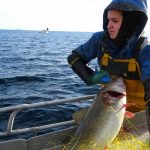Despite extensive study by a host of experts, it has been regard that the ecological damage caused by BP oil spill in the Gulf of Mexico is not much. In the 2 months since the spill began, the gulf has been examined by an armada of researchers — from federal agencies, universities and nonprofit groups. They have brought back vivid snapshots of a sea under stress: sharks and other deep-water fish suddenly appearing near shore, oil-soaked marshes turning deathly brown, clouds of oil in deep water.
In most of the studies wide gasp remain in their data, there is wide disagreement about the big picture. Some researchers have concluded that the gulf is being spared an ecological disaster. Others think ecosystems that were already in trouble before the spill are now being pushed toward a brink.
Roger Helm, a U.S. Fish and Wildlife Service official, informed that the distribution of the oil, it’s bigger and uglier. He added that the possibility of having significant changes in the food chain, over some period of time, is very real. In recent years, Louisiana has been losing a football field’s worth of its fertile marshes to erosion every 38 minutes. In the gulf itself, pollutants coming from the Mississippi’s vast watershed helped feed a low-oxygen “dead zone” bigger than Chesapeake Bay.
On the other hand many scientists have focused on more subjective measures of the gulf’s health — studying the behavior of wildlife, the movements of oil and the state of larger ecosystems. For them, answers are even more elusive. Robert Barham, secretary of the state’s Department of Wildlife and Fisheries, said that the marsh grasses, the canes, the mangrove are dying. They’re stressed and dying now.








